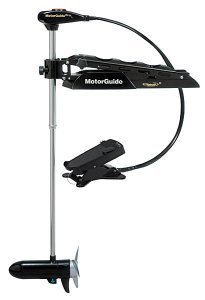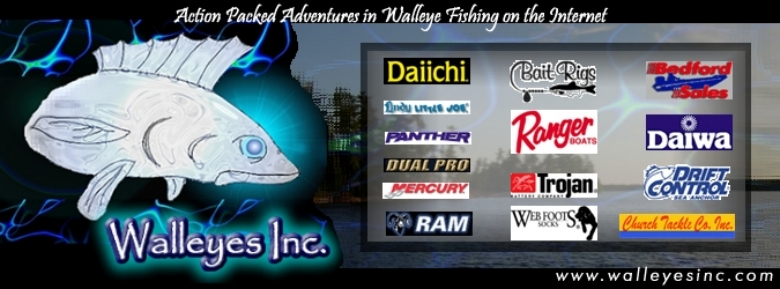Crankbaits, shad baits, stick baits are
all names that we give to minnow imitators. Crankbait fishing
has been very popular in the South and the North for catching
bass. Crankbaits can and do take a lot of bass, northern pike,
muskies, crappie, trout and of course walleyes.Names like,
Shad Rap, Fat Rap, Rattling Rapala, Floating Rapala and Countdown
became common conversational topics to most anglers. I remember
being introduced to crankbait fishing not as a lure to cast,
but to troll.
Selection of a crankbait is not difficult to determine, if
you keep just six factors in mind. Choose your crankbait according
to shape, size, running depth, action, color and sound. These
six factors will increase your success while fishing this
fall.
The shape of the crankbait you choose, might be determined
by the type of baitfish that are present in the body of water
you're planning to fish. If there are smelt in the system
you're fishing try using a Storm Thunderstick Jr. or a Husky
Jerk . If the forage base is more Shad based you can try a
Hot n' Tot or a Fat Rap. And finally don't forget the good
old Shad Rap if you're fishing a system with perch, walleye
fingerlings or panfish.
Sound is another sense that the fish use to locate and identify
food. Water conditions and specie of fish will determine the
sounds that you would like to imitate. All fish have an organ
along the side of their heads and bodies called a lateral
line that enables them to detect subtle vibrations in the
water. If you are fishing in dirty shallow water a noisy lure
is the answer. If you are fishing in stained water then you
want the walleye to be able to hear your bait. Rattling Rapalas
are a good example of a noisy bait that will take a variety
of fish
under these conditions. If you are fishing in a clear lake
quiet baits that produce tight wobble and vibration are what
you want to use.Try to match bait already found in the environment.
Use flash tape to highlight crankbaits to give that extra
flash. Along with flash you might want to change to a dramatic
color.Chartreuse and the Firetiger colors aren't part of the
environment but in stained water they are a visible target
for fish. The type of terrain that you are fishing will determine
color also. If you are fishing over sand maybe crawfish color,
or next to a weed bed or drop off a perch color will trigger
fish. Try to always alternate colors whenever fishing.
 |
Usually I like to start fishing with a #7 Shad Rap
to see what the fish are hitting on. If they continue
to bite on that size I move up to a #9 Shad Rap. The
bigger fish do respond to the larger baits and so do
the smaller fish. |
I have caught fish smaller than my baits on many occasions
but most of the time the fish increase in size. If the fish
don't respond to the larger size I then move back down the
scale of size to a #5 Shad Rap and work between that size
and a #7. The other rule of thumb is in the spring I use small
baits and in the fall large baits. The reason is simple, I
try and match the food and the size of bait. In the fall the
fish start feeding to store body fat and larger minnows contain
more protein than smaller ones.Running depth is a factor that
has many variables to consider. To determine where the fish
are, look at your depth finder. You will want to put that
lure in front of their face, not below them or too far above
them, but right in the" strike zone". Usually the bigger the
lip on the
bait the deeper they dive, but don't overlook line diameter
and length of line let out. If you want your bait to run at
8' depth then you will need to let out about 50' of 8lb test
line. If you increase the diameter of the line the bait will
ride higher in the water. If you increase speed the lure will
dig deeper and then ride higher. Therefore, experiment with
speed, line diameter and lip structure to see if the bait
is getting down to the "strike zone".In fact, I believe that
if more anglers would fish more shallow they might be surprised
to find a number of walleyes. The walleyes that inhabit the
riprap along the Mississippi river will be found in 1 to 7
feet of water most of the time. Exceptions to this rule my
be, clear water conditions or bright hot weather. More times
than not you can find
walleyes in and around these shallows caused by the riprap.

MotorGuide
Tour Edition |
To catch shallow fish, I use my bow-mount MotorGuide
to get as close to shore as possible. I face into the
current and cast upstream so the bait
moves downstream. This is essential because 90% of all
fish in a river
face into the current in order to feed. When I make
my first cast it is critical to present the bait to
the feeding fish in a natural life like manner. I will
cast upstream as close to shore as possible, then I
point my Quantum rod directly at shore. This gives my
crankbait a direct
downstream run. By extending my arm and using a long
7 foot rod I can get as close to shore as possible. |
As the bait starts down river I will use my wrist to jerk
or flick the bait causing it to dart and dive representing
a wounded minnow. As the bait approaches the boat I will also
take in as much slack as possible to allow myself better feel
and
better hook setting leverage. My next couple of casts are
going to be deeper. Here, because the water tends to be deeper,
I will change my presentation to more traditional casting.
My cast will be ahead of the boat and I will retrieve the
lure with a bait bumping approach. My next cast might be even
deeper to see
if the walleyes have moved out, but again it will be a normal
cast and retrieve method. Under low-light conditions or in
darker water, walleyes will be shallow 1 to 7 feet. But if
it's bright or there's a lot of boat traffic, they move deeper.
When I am fishing along the riprap I use a method known as
"slipping the current". Basically this method allows the operator
of the boat to stay in one spot or to drift downstream slowly
by using the electric trolling motor. I set my bowmount MotorGuide
to match the speed of the current and occasionally I will
increase the thrust to move up stream to new water. Your electric
trolling motor is important for you to use in this situation,
because it provides a quiet approach to fishing fish in the
shallows. When fishing walleyes in this shallow column of
water I prefer to use the Storm Thunderstick or the Thunderstick
Deep Jr. in the metallic silver or the golden shiner color.
The fish even this shallow are still visually orientated and
I need something in dirty or stained
water that is going to give off flash and has the ability
to dive to the
desired depth.Bait action again can be the triggering factor
for many a finicky
walleye, northern pike and bass. In cold clear water use a
slow wobble and slow retrieve or trolling speed. In warmer
water, tight action and increased speed will increase your
chances of a larger fish. Check your action when you attach
your lure to the line. Run the lure along side the boat to
see if it has a tight or slow wobble. Many baits can be tuned
to run true by bending the nose ring on the bait. This will
allow the bait to run in the correct path behind the boat.
Be a change up person. Don't stick with one bait all the time.
Try different colors, presentation, size, rattles and added
weight. So many fishermen tend to stay with old methods that
have worked before and fail to boat fish because they are
stubborn about bait selection. Remember you can be sure that
you have made the right selection when choosing a lure
because, you have done the research and you are not afraid
of trying a new approach. The ultimate decision comes when
you start tying into those fish and when you do let me know
where they are biting by dropping me a line on the web at
www.samanderson.com

